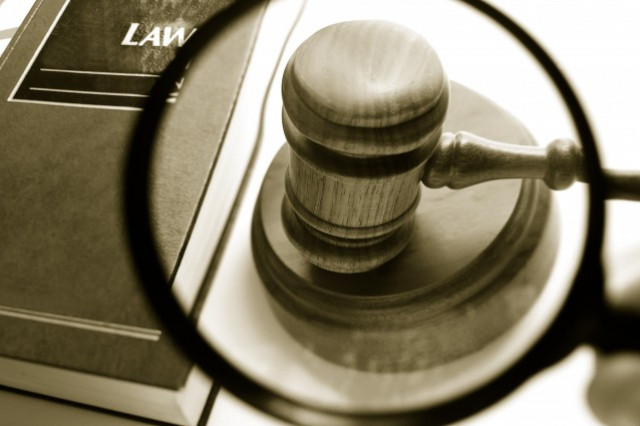Historically and until relatively recently, the world of business has been characterized primarily by secrecy and a certain opacity, rather than transparency. This may be due to the fact that the very instruments of French capitalism are rather opaque.

The fiction of business appearances, whose most important incarnation is a society based on opacity, creates a curtain between third parties and associates, at least in certain forms of society. The most widespread form of company in France is the corporation. That is to say, a company in which the shareholders are not known a priori by third parties. Bearer securities are much more widespread than nominatives and the functioning of companies (Board of Directors or General Assemblies) is traditionally very little transparent. The figure of the leaders and their remuneration are placed under the sign of discretion. The financial information on the activity and the solidity of the companies are limited to what is legally obligatory.
The implicit rule that has long prevailed in the business world has been secrecy, filtering of information, and the silent nature of decision-making bodies. The exception to this rule was the indispensable publicity of the acts of social management of the company, published in the bulletins of legal announcements. In any case, a certain transparency, whether you like it or not, is absolutely necessary for the functioning of markets and the economy in general. Moreover, we have reached a point where the rule and the exception are being reversed. Should companies report everything except a few reserved issues that are strictly limited?
Among the factors that explain the need for transparency in companies, technology is at the top. We are witnessing an unprecedented development of communication and it is evident that the flows and stocks of internal information of companies are prepared in all areas and access to this information is being disseminated more than in the past. As there is an undeniable porosity between what happens inside the company and outside it, the acceleration of internal information flows leads to an increase both quantitative and qualitative external information. The rate of dissemination of information has also accelerated considerably. Much information is now available in real time and others are circulating faster than before. In other words, the time that separates the moment when the information is private or secret and the moment in which this same information becomes semi-public, and then finally public, decreases with every passing day.
The implicit rule that has long prevailed in the business world has been secrecy, filtering of information, and the silent nature of decision-making bodies
Information has been vertical and top-down
The second important factor is the evolution of the organisations themselves. The circulation of information within companies has long been vertical and top-down. Before, the power (and also the information) in the company was very concentrated. In this traditional pyramid model, information, when it went outside the ruling circle, descended hierarchically, diluted and fragmented. Conversely, little information went back up and they had to do so via the same hierarchical trajectory (...) The companies’ transition to a network model or to a matrix organization scheme is already a reality. In these cases, information circulates in all directions, vertically, horizontally and obliquely. Moreover, it circulates equally between production units, departments, subsidiaries, networks... and even within the inner circle of the group. In the same sense, we are witnessing the enrichment of the nature of the information, financial as well as commercial, technical, strategic...
In addition, we have seen an unprecedented development in all industrialized countries with regards to the employees in general, and the representative bodies of the staff in particular. This evolution is not only a consequence of changes in behaviour, but also to changes in legislation. The information transmitted to the employees is rightly considered as one of the key means in the mobilisation of all the players of the company.
The third factor is found in the evolution of company shareholders. When it is a family-held company, public information is parsimonious. They simply comply with legal obligations. When the company relies heavily on external loans, it is obliged to give information to its bankers. In general, this is information which remains confidential. Bank secrecy is by no means a word to be taken in vain. The dialogue between the banker and the manager of the company is exclusive, private, confidential, positioned in the double space of trust and secrecy.
The pressure to make information public increases when we move from individual to institutional ownership: pension funds, investment funds, investment banks, insurers. These institutional investors, who act as intermediaries by investing money from others, are infinitely more demanding as regards the company, than individual shareholders (...) In this area, English and American transparency has traditionally been greater than in continental Europe. The reason for this difference is that financial markets have played a bigger role in financing companies in the UK and the USA.

The company has been considered an opaque organization
For a long time in France, the company has been considered a priori as an opaque organization. For its part, the law has consecrated this relative opacity. The company was also subject to a new form of state interventionism or by judges who wanted to impose a certain egalitarianism and ethical morality of the present times. If it is not natural, transparency is often a coercion derived from the law, as the Dean Carbonnier recalls, which translates into new obligations as regards information.
Transparency is not a legal concept per se, and more so if we take into account that it is not included in the principles of the Treaties of the European Union. But it raises a heated debate among those who call it a diabolical principle and false value, as does Alain Etchegoyen, and who bestow it with all kinds of virtues. Whatever it is, the matter has been discussed for years.
A problem well known to economists and jurists is that of industrial property. Undoubtedly, it was Schumpeter who has best identified it. Let's start with the theory of concurrency. In this way, each company must be able to compete with any other, and the virtues of competition do not fully manifest themselves until it is applied totally, and situations of monopoly, duopoly, oligopoly, and so on likewise totally avoided.
This is because each manufacturer can always be expelled from the market if it is inefficient and does not reach an economic optimum. If a manufacturer can shamelessly copy the innovation of another, it is perfectly understood that this has a perverse effect. The incentive to innovate, to finance research and develop projects disappears, since those who make these investments cannot benefit from their results. It is precisely for this reason that industrial property is considered to be protected, at least temporarily... Sooner or later, everything ends up in the public domain and the law only serves to underpin economic reasoning.
The demand for transparency in the economic world can also be taken advantage criminally. In many well-known businesses, the revenge of a reckless employee or the frustrated ambitions of a responsible person has led to the removal of confidential and strategic documents. By sending them to justice or to the media, they try to undermine the reputation of the company concerned, even if it does not directly benefit the competition. This is also one of the traps of "economic intelligence", which is behind the simple espionage to which some companies are sbject. Transparency is not infinitely flexible. It must respect the principles of competition, which cannot exist without a minimum of confidentiality. The principle of effectiveness does not lead to the public doing it, at the risk of losing its effectiveness. In a quite legitimate way, the company can keep a large number of aspects of its business secret, without being reproached.
The pressure to make information public increases when we move from individual to institutional ownership: pension funds, investment funds, investment banks, insurers
Generalised transparency is not without risk
Although total transparency is not feasible, and neither possible nor desirable, a certain transparency is indeed necessary. We say yes to greater transparency, but we are not naive. Generalised transparency is not without risks. Too much transparency can lead to "over-information" or "bad information", generate frustration about what is it intends to protect and may weaken the companies that pursue it if their competitors do not do the same. So we need to be transparent, but not to a greater degree than our competition.
Equally, public authorities use transparency to protect those who are considered weak, giving them access to information, and to add morality to the economy or fight against illicit behaviour, and this justifies the disclosure of secrets. For their part, consumers demand more transparency. The mad cow crisis was an example. We must acknowledge that this claim is quite legitimate, particularly as regards the risks linked to a product or service.
In any case, French companies are increasingly introducing transparency in their management. At the same time, transparency is for the companies an element of seduction when facing their customers and investors, and a means to protect themselves from the outside. Communication is highly valued and the information is perceived very positively. Demonstrating the promotion of information, communication and the principle of transparency promotes the company in the eyes of its shareholders, employees, customers and suppliers. For example, this leads to the companies implementing the recommendations on good governance, whose purpose is to improve their operation via greater transparency.
Continuing with transparency as a tool to protect the company, we highlight crisis situations (accidents, catastrophes...) that every company has to face. Transparency allows intelligent management of crises. The public must know the causes and consequences of the accident.
Conclusion
Although total transparency is not feasible, and neither possible nor desirable, a certain transparency is indeed necessary. We say yes to greater transparency, but we are not naive
The contraction of the sphere of the secret seems ineluctable, which means that in the company domain, public influence will expand. This is not only a result of technological developments, but also of the pressure of markets, the evolution of mentalities and legislative advances. The sense of history seems to go resolutely in this direction. However, we must be vigilant that this is not to the company’s detriment. There will always be a secret part in the company, in the field of commercial or financial negotiations, and preparatory work for decision-making. Between shareholders and managers, there will always be areas where secrecy is the rule. Between the leaders and the employees, there will be information that will not be disseminated or divulged. Between the consumer and the manufacturer, there will be an irreducible information asymmetry. Nevertheless, all this is carefully managed. It is up to each company to define with the greatest precision the rules that must be strictly observed in this area of production and dissemination of information. Such a control of transparency and secrecy will depend to a large extent on its reputation, attractiveness and effectiveness.
Extracts from the book "L'entreprise entre transparence et secret", Pouvoirs, 2/2001 (n. 97), p. 33-46 http://www.cairn.info/revue-pouvoirs-2001-2-page-33.htm









